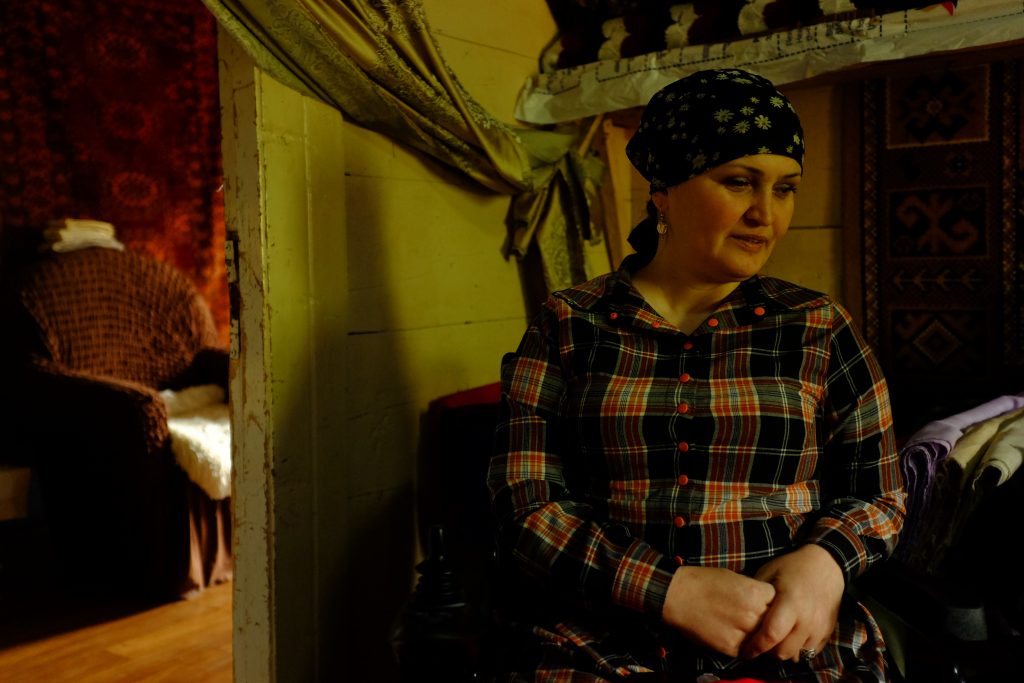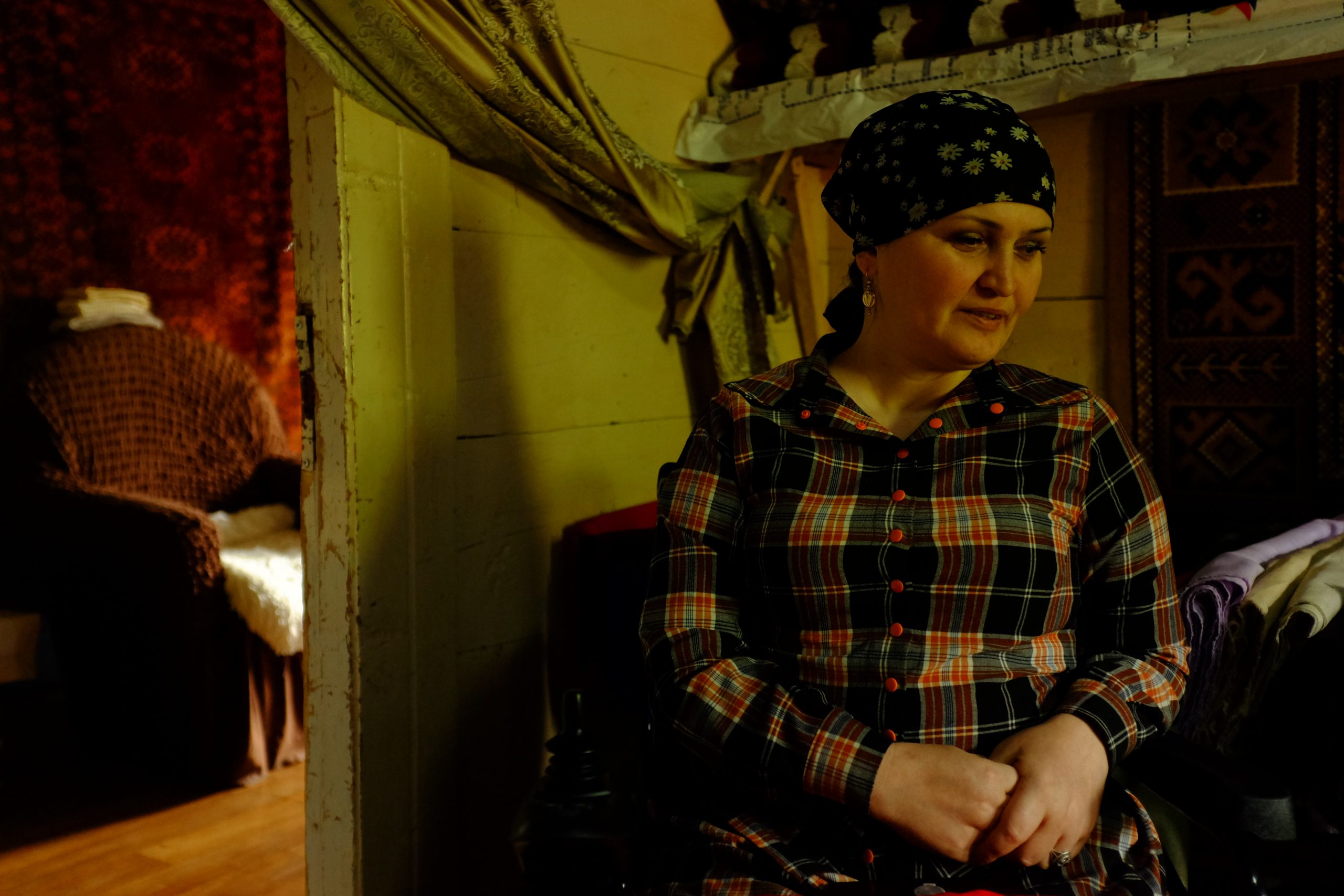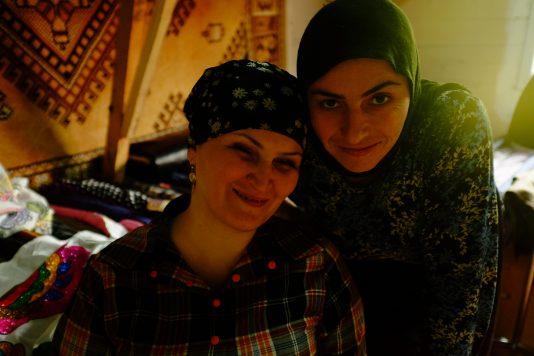In the second cycle of Magic Carpets residencies, Tbilisi Photo Festival has sent 5 artists in mountainous Adjara, remote part of one of the most touristic regions of Georgia. The roads leading to the mountains are often closed due to the weather conditions, so sometimes, especially in winter, it is not possible to reach the high villages. Because of this and because of the turbulent history, religious beliefs and traditions, people of mountainous Adjara are often considered as one of the most isolated communities in Georgia.
Ghorjomi Village, which was one of the main destinations of Magic Carpets artists, is indeed one of the most isolated communities of the region, but, also, the strongest one. The biggest and oldest mosque is the pride of the village, muslim community remains the most conservative here – led by men, they are following the everyday traditions that most of the people in surrounding villages have forgotten years ago.
This was the very reason why one of the MC artists, Nini Khuroshvili, decided to spend three weeks in Ghorjomi and research the life of women and their role in the community.
This is how she found her main protagonist, Mzevinar (meaning in Georgian ‘one who looks like sun’) and connected with women from nearby villages through her.
Mzevinar Iremadze is one of the residents of Gorgadzeebi, a village situated in the Ghorjomi valley of Adjara, in the southwestern part of Georgia. Since her childhood, she has battled with muscle atrophy, which has made it difficult for her to move the lower part of her body, leading her to rely on a wheelchair. Despite these physical challenges, she has actively contributed to supporting the local women’s community in Ghorjomi.
Mzevinar encouraged women to participate in a small local workshop where they engage in creating traditional embroideries and sewing clothes for the local community. She played a pivotal role in establishing the first independent atelier, which now operates online, taking orders and serving 16 different villages in the valley.
Her dedication extends to supporting women of various generations in creating traditional embroideries, which they sell online, primarily using the Facebook platform.
Mzevinar’s atelier creates not only a working space for women, but a space for gathering and discussions, sometimes just a safe space to be for Ghorjomi women.
“Magic Carpets” project: Women’s stories from Ghorjomi
Nini Khuroshvili (artist/researcher – Tbilisi, Georgia) was the second artist to travel to Ghorjomi Valley. Since the community there is known for its strong self-organizing system, Nini was particularly interested in understanding the ways of their self-organization. And because they also are known to be the most conservative Muslim community, who, compared to the surrounding villages, still follow the strict rules, Nini wanted to find out more about the gender roles and the power of women in decision-making.
With these intentions she spent three weeks with the community, going from house to house, meeting new people, asking questions and getting more and more answers as she became more familiar to the community members.
In the end, Nini decided to focus on the stories of the local women, as they impressed her the most. She’s met with the women representing three different generations, living in four villages of the valley.
The audio interviews Nini recorded, the portraits of the respondents she took and the visual material depicting their life in the village tell the inspiring story of these women.
In artist’s words:
‘The project ‘Women’s Stories from Ghorjomi’ was inspired during the Magic Carpets residency, where I spent three weeks living with a local family in the valley. My aim was to explore the narratives of local women spanning different generations. I sought to listen to their experiences and understand the roles they played in the conservative Muslim villages. I delved into their stories of marriage and endeavored to uncover more about their personal narratives rather than perpetuating stereotypes.
Media portrayals of women in Ghorjomi have often depicted them as victims, delegitimizing their societal roles. My goal was to challenge these stereotypes and present a more nuanced understanding of the women in Ghorjomi, highlighting their diverse and multifaceted lives.
Number of community members included in the project: 25
Reasons for participating in the “Magic Carpets” project:
Interest for meeting new people, establishing new relationships, creating new narratives.




